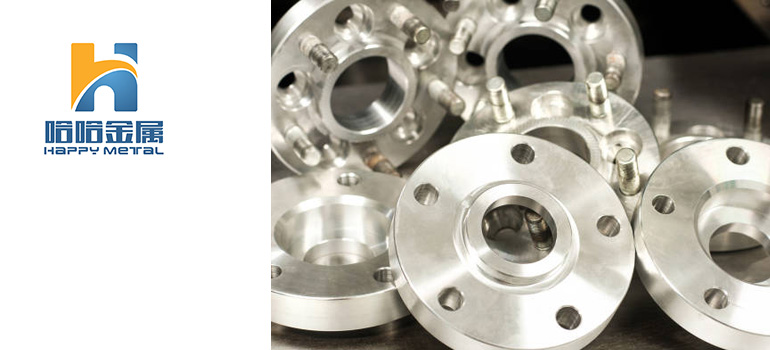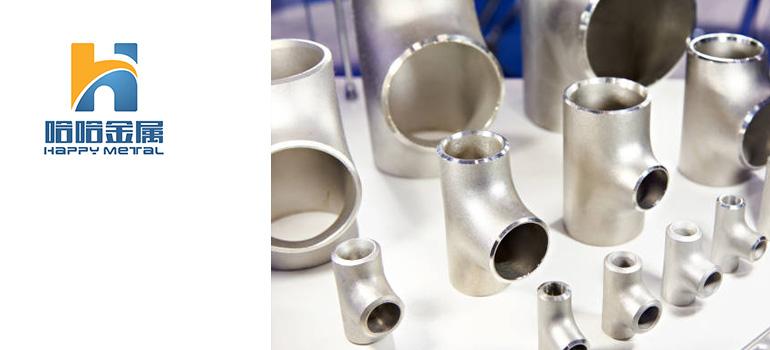Summary:
How to Purchase High-Quality Steel Pipe Fittings Within Budget
Understanding the Types of Steel Pipe Fittings
Factors to Consider When Purchasing Steel Pipe Fittings
Evaluating Suppliers for High-Quality Steel Pipe Fittings
Cost-Effective Strategies for Purchasing Steel Pipe Fittings
Tips for Maintaining and Extending the Lifespan of Steel Pipe Fittings
Understanding the Types of Steel Pipe Fittings
When you’re looking to purchase high-quality steel pipe fittings within a reasonable budget, understanding the different types of fittings becomes crucial. Steel pipe fittings play a vital role in engineering and construction projects, making it essential to choose the right types for successful project outcomes.
Introduction: Importance of Steel Pipe Fittings
Steel pipe fittings are critical components for connecting and installing piping systems. They serve not only as components to join pipes but also facilitate fluid transmission and control within the pipeline system. Understanding the various types of steel pipe fittings and their functionalities and advantages in different applications can help you make informed purchasing decisions and ensure the smooth progress of your projects.
Common Types of Steel Pipe Fittings
Elbows and Couplings:
Elbows: Used to change the direction of pipes, available in 90-degree and 45-degree variants.
Couplings: Used to connect two pipes or pipes to valves, equipment, etc.
Tees and Reducers:
Tees: Used to create branches in pipelines, available in equal and reducing sizes.
Reducers: Used to connect pipes of different diameters, balancing fluid pressure and flow velocity.
Flanges and Unions:
Flanges: Used to connect pipes to valves, pumps, or other equipment, secured together with bolts and nuts.
Unions: Used for quick assembly and disassembly of pipes, facilitating maintenance and replacements.
Why Understanding These Types Matters
Choosing the appropriate steel pipe fittings ensures the smooth operation, safety, efficiency, and reliability of your pipeline system. For instance, in high-pressure or corrosive environments, selecting fittings made from corrosion-resistant and high-strength materials is crucial. Understanding the characteristics and applications of each type of steel pipe fitting helps you make the best choices based on your project requirements.
These foundational insights provide a starting point for purchasing steel pipe fittings. Consider specific project needs, budget constraints, and the reputation and support services of suppliers when making your selection. With a thorough understanding and careful selection process, you can procure high-quality, suitable steel pipe fittings that form a solid foundation for the success and long-term operation of your projects.
Factors to Consider When Purchasing Steel Pipe Fittings

When purchasing steel pipe fittings, several critical factors should be taken into consideration to ensure you select fittings that meet your project requirements and quality standards. Here are the key factors to consider:
Quality Standards for Steel Pipe Fittings
Ensuring that the steel pipe fittings meet recognized quality standards is essential for reliability and performance. Look for fittings that comply with international standards such as ASTM, ASME, ANSI, or ISO. These standards ensure that the fittings have been manufactured to specific material compositions, dimensions, and performance criteria.
Importance of Compliance with Standards
ASTM, ASME, ANSI, and ISO Standards
Material Composition and Mechanical Properties
Material and Durability
The material of the fittings plays a crucial role in their durability and performance in different environments. Consider factors such as corrosion resistance, strength, and suitability for the specific application conditions (e.g., high temperature, corrosive chemicals).
Corrosion Resistance and Material Selection
Suitability for Application Environment
Longevity and Durability
Compatibility and Sizing
Ensure that the steel pipe fittings are compatible with your existing or planned piping system. Consider factors such as fitting dimensions (e.g., diameter, thickness) and end connections (e.g., threaded, welded, flanged). Proper sizing and compatibility prevent leaks, ensure efficient flow, and facilitate easier installation and maintenance.
Matching Pipe Dimensions and Connections
Threaded, Welded, or Flanged Connections
Pressure Ratings and Flow Considerations
Manufacturer’s Reputation and Support
Choose fittings from reputable manufacturers known for their quality and reliability. Research the manufacturer’s track record, certifications, and customer reviews. A reliable manufacturer provides assurance of consistent product quality and good after-sales support.
Researching Manufacturer’s Track Record
Certifications and Quality Assurance
Customer Reviews and Feedback
Cost Considerations
While quality should be a priority, consider your budget constraints. Compare prices from different suppliers while ensuring that the price reflects the quality and durability of the fittings. Bulk purchase discounts and long-term cost considerations (e.g., maintenance and replacement costs) should also be evaluated.
Price vs. Quality Trade-offs
Bulk Purchase Discounts
Total Cost of Ownership
By carefully evaluating these factors, you can make informed decisions when purchasing steel pipe fittings that not only meet your immediate project needs but also ensure long-term reliability and efficiency of your piping systems.
Evaluating Suppliers for High-Quality Steel Pipe Fittings
When evaluating suppliers for high-quality steel pipe fittings, several key factors should be considered to ensure you choose a reliable and reputable supplier. Here are the crucial aspects to evaluate:
Researching Reputable Suppliers
Researching potential suppliers is essential to identify those with a solid reputation for delivering high-quality products and excellent customer service. Look for suppliers who specialize in steel pipe fittings and have a history of supplying to industries similar to yours.
Industry Experience and Specialization
Years in Business and Industry Reputation
Specialization in Steel Pipe Fittings
Quality Assurance Certifications
Verify that the supplier holds relevant quality assurance certifications, such as ISO 9001, which ensures that their manufacturing processes meet international quality standards. These certifications indicate that the fittings are manufactured using standardized processes and materials.
ISO 9001 Certification and Quality Standards
Adherence to International Quality Standards
Consistency in Manufacturing Processes
Product Testing and Inspection Protocols
Inquire about the supplier’s product testing and inspection protocols. Reliable suppliers conduct rigorous testing to ensure that their steel pipe fittings meet specified performance and durability requirements. This includes testing for factors like material composition, mechanical properties, and corrosion resistance.
Testing and Inspection Processes
Material Composition and Mechanical Properties Testing
Corrosion Resistance and Durability Testing
Customer Reviews and Testimonials
Seek feedback from other customers or industry peers regarding their experience with the supplier. Positive reviews and testimonials indicate customer satisfaction with product quality, timely delivery, and overall service. This information can provide valuable insights into the supplier’s reliability and responsiveness.
Feedback on Product Performance
Customer Satisfaction and Service Levels
Timely Delivery and Support
Support and Services
Evaluate the supplier’s after-sales support and services. A reliable supplier offers assistance with technical inquiries, provides prompt responses to queries, and offers solutions in case of issues or emergencies. Good support ensures smooth procurement and ongoing operational efficiency.
Technical Support and Responsiveness
Availability of Technical Assistance
Handling of Queries and Issue Resolution
Pricing and Value
While cost shouldn’t be the sole determining factor, compare prices from different suppliers to ensure competitive pricing aligned with the quality and reliability of the fittings. Consider factors such as bulk purchase discounts and long-term cost savings from durable, low-maintenance fittings.
Competitive Pricing and Long-Term Value
Bulk Purchase Discounts and Price Negotiation
Total Cost of Ownership Considerations
By carefully evaluating these factors, you can select a supplier of high-quality steel pipe fittings who not only meets your technical specifications but also provides reliable support and contributes to the success of your projects.
Cost-Effective Strategies for Purchasing Steel Pipe Fittings
When it comes to purchasing steel pipe fittings, employing cost-effective strategies is crucial to balancing quality with budget constraints. Here are effective strategies to consider:
Setting Budgetary Limits
Define clear budgetary limits based on project requirements and financial constraints. Establishing a budget ensures that you stay within financial limits while acquiring fittings that meet your quality standards.
Determining Project Budget Constraints
Aligning Budget with Project Requirements
Identifying Cost Constraints and Limits
Comparing Pricing and Value
Compare prices from multiple suppliers to find competitive offers without compromising on quality. Look beyond initial costs to assess long-term value, considering factors like durability, maintenance requirements, and total cost of ownership.
Assessing Long-Term Value Proposition
Quality vs. Price Considerations
Evaluating Durability and Maintenance Costs
Negotiating with Suppliers
Negotiate prices with suppliers, especially for larger orders or ongoing projects. Bulk purchase discounts, volume pricing agreements, or long-term contracts can help reduce costs while maintaining quality standards.
Leveraging Negotiation Strategies
Bulk Purchase Discounts and Volume Pricing
Negotiating Long-Term Contracts
Considering Alternative Materials or Suppliers
Explore alternative materials or suppliers that offer competitive pricing without compromising on quality. Consider materials with similar performance characteristics or explore suppliers with lower overhead costs.
Exploring Alternative Material Options
Comparing Different Material Costs and Benefits
Evaluating Supplier Cost Structures
Optimizing Inventory Management
Implement efficient inventory management practices to minimize stockouts, reduce excess inventory, and optimize ordering frequencies. Just-in-time (JIT) inventory systems can help streamline procurement and reduce carrying costs.
Implementing JIT Inventory Systems
Reducing Carrying Costs and Overstock
Optimizing Ordering and Delivery Processes
Considering Lifecycle Costs
Evaluate lifecycle costs, including installation, maintenance, and replacement expenses. Opt for fittings that offer durability and reliability to minimize ongoing maintenance and replacement costs over time.
Analyzing Lifecycle Cost Implications
Factoring in Installation and Maintenance Costs
Minimizing Replacement and Downtime Expenses
By implementing these cost-effective strategies, you can effectively manage your budget while procuring high-quality steel pipe fittings that meet your project needs and performance expectations.
Tips for Maintaining and Extending the Lifespan of Steel Pipe Fittings
Maintaining and extending the lifespan of steel pipe fittings is essential for ensuring the longevity and efficiency of your piping systems. Here are some practical tips to help you achieve this:
Proper Installation Practices
Ensure Proper Alignment and Fit: During installation, ensure that fittings are properly aligned and securely fitted to prevent leaks and structural weaknesses.
Use Correct Installation Techniques: Follow manufacturer guidelines and recommended procedures for installation to avoid damaging the fittings and ensure they perform optimally.
Regular Inspection and Maintenance
Scheduled Inspections: Regularly inspect fittings for signs of wear, corrosion, or leaks. Schedule inspections based on usage frequency and environmental conditions.
Check for Corrosion: Inspect fittings for any signs of corrosion, especially in environments prone to rust or chemical exposure.
Monitor Wear and Tear: Look for signs of wear such as cracks, fractures, or deformities that could compromise structural integrity.
Routine Maintenance: Implement a maintenance schedule that includes cleaning, lubrication (if applicable), and preventive measures to extend the lifespan of fittings.
Clean and Debris Removal: Keep fittings free from dirt, debris, and foreign particles that can cause abrasion or corrosion.
Upgrading and Retrofitting
Consider Upgrades: Evaluate fittings periodically to assess if newer materials or designs could offer better performance or longevity.
Upgrade to Corrosion-Resistant Materials: Consider upgrading to stainless steel or other corrosion-resistant materials for enhanced durability in harsh environments.
Retrofitting: Modify fittings as needed to accommodate changes in system requirements or to improve efficiency and safety.
Adopt Modern Fitting Designs: Upgrade to fittings with improved designs that enhance flow efficiency and reduce pressure loss.
Prompt Repairs and Replacements
Address Issues Promptly: Immediately repair or replace fittings that show signs of damage or malfunction to prevent further deterioration or system failures.
Quick Response to Leaks: Address leaks promptly to prevent water damage, loss of fluid, and potential environmental hazards.
Training and Education
Educate Maintenance Teams: Provide training to maintenance personnel on proper handling, maintenance procedures, and recognizing signs of fitting deterioration.
Promote Best Practices: Encourage adherence to industry standards and best practices for handling and maintaining steel pipe fittings.
Environmental Considerations
Protect Fittings from Environmental Factors: Implement measures to shield fittings from extreme temperatures, humidity, chemicals, or abrasive substances that can accelerate corrosion or wear.
Use Protective Coatings: Apply protective coatings or wraps to fittings exposed to corrosive environments to extend their lifespan.
By implementing these tips, you can effectively maintain and extend the lifespan of steel pipe fittings, ensuring reliable performance and minimizing downtime or replacement costs in your piping systems.




